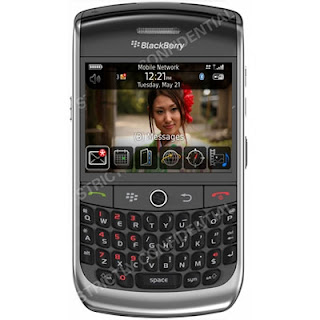So in order to install apps and themes on your BlackBerry, you will need the BlackBerry Desktop Software installed on your desktop computer. You can download the latest version from the official BlackBerry website here: http://na.blackberry.com/eng/services/desktop/. BDS is available both for Windows and Mac. Once you have installed BDS on your PC connect your BlackBerry smartphone with the USB cable provided with your phone or any other USB cable that fits, start the BlackBerry Desktop Manager program from your desktop shortcut or from the Start menu programs on your PC.
When the BlackBerry Desktop Manager starts, you will be shown a screen with few options to choose from, if you want to install applications and themes go to "Application Loader - Update, add, or remove device applications". Once you click on the "Application Loader" icon you will be show the following screen with the two options to choose from:
The first option "Add/Remove Applications - Add new applications to your device or remove existing applications." is the one we need in order to install the app or the theme we want on our device. The second one "Update Software - Update your device software" is used for updating your BlackBerry device software. If you are still staring at this screen click "Add/Remove Applications" and you will see the next screen:
To demonstrate how to install an application or a theme to your BlackBerry we will need something to install right? So, we will be installing the free GlassBerry theme for the BlackBerry Tour which can be downloaded here. Most BlackBerry apps and themes you will install using the BlackBerry Desktop Manager will come as a ZIP file you need to extract into a folder somewhere. Once you extract your app/theme ZIP you will see several files like this:
Now from the BlackBerry Desktop Manager screen on the previous image locate the "Browse" button and click it. Now browse to the folder where your app/theme files are and select the ALX file, please make sure that both the ALX and the COD files are in the same folder.
After you select the file, you will see the app/theme is listed in the Application Loader box. Now click "Next" to install the application or theme and you will be shown a screen where you can see what you will be installing on your phone. Click "Finish" and the installation will begin. Once it is complete you will be show a success message. This means that you have installed the theme or application on your BlackBerry smartphone. Now disconnect your device and enjoy.
If you are installing themes you can activate the new theme that you just loaded on your BlackBerry smartphone by going to "Menu" > "Options"> "Theme" on your phone, from where you can select the theme you want. Scroll to the one you would like to use click the "Menu" button and select "Activate" and you are done.
Source: http://www.blackberrysoftware.us/n10170,how-to-install-apps-and-themes-using-the-blackberry-desktop-manager-for-dummies.html


















